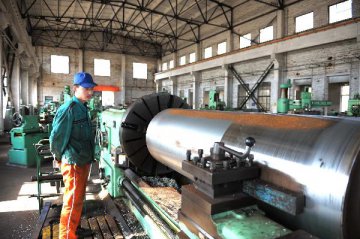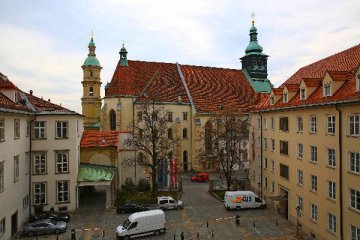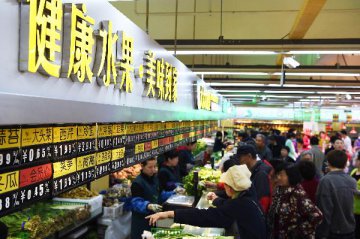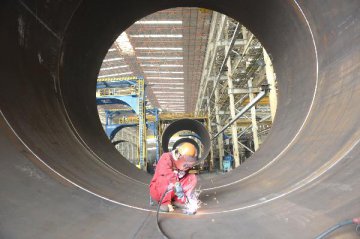
The manufacturing purchasing managers’ index (PMI) came in at 51.2 percent while the non-manufacturing PMI hiked 0.5 percentage points to 54.5 percent. Both of them maintained in expansion range and it means that the economic growth has been stable. Analysts believe that the economic growth is shifting from short-term surging to overall stable growth.
The manufacturing PMI came in at 51.2 in May, according to data from the National Bureau of Statistics (NBS) and the China Federation of Logistics and Purchasing (CFLP).
“The PMI in May is flat with that of April and has been expanding for 10 straight months. It shows that the economic growth has been stable.” Zhang Liqun, a researcher at the Development Research Center of the State Council, indicated.
Specifically, the orders for export, accumulated orders, the inventory of raw materials, the number of employees and the expectation on production activities all jumped slightly.
Zhang indicated that the hiking or float indices on orders means that the demand in the domestic and overseas markets is stable while the declining production index and hiking production expectation mean the production activities are stable. It can be judged that the economic growth is shifting from short-term surging to overall stable growth.
The PMI shows that the overall production and operation of enterprises is good, indicated Chen Zhongtao from the CFLP. On the one hand, thanks to the continuous stability of the macroeconomic environment, the market was improved. On the other hand, it also benefited from favorable policies.
The stable recovery of the non-manufacturing PMI also further proved the economic trend. Statistics show that the non-manufacturing PMI hiked 0.5 percentage points to 54.5 percent in May.
The non-manufacturing PMI recovered in May and maintained progress amid stability, indicated Cai Jin, vice director of the CFLP. The service PMI recovered significantly, which means that the economic structure has been further improved.
Based on the manufacturing PMI and the non-manufacturing PMI, there have been more active factors in economic recovery.
Specifically, the PMI on the equipment manufacturing, high-tech and consumables industry maintained high levels. The expected indices on the equipment manufacturing and high-tech manufacturing industries reached 58.7 percent and 59.1 percent, 0.3 and 0.2 percentage points higher than the previous month. Enterprises are more confident about the future development of the industry.
In addition, China has introduced policies on reducing the taxes and fees on small and medium enterprises. The vitality of small and medium enterprises has been enhanced. Statistics show that the PMI for medium and small enterprises was 51.3 percent and 51.0 percent in May, 1.1 and 1.0 percentage points higher than the previous month. The PMI for small enterprises hiked for three straight months and jumped into the expansion range for the first time in 2017.
Active factors are also reflected in the non-manufacturing PMI. Statistics show that the index on retail activities surged in May. The express delivery and other activities related to online consumption maintained high growth. It shows that the public consumption is active and consumption is playing an increasingly leading role.
Major macroeconomic indicators declined in April and the market believes that the economic growth may decline in the future. However, the NBS has released an article, indicating that China’s economic operation is stable on the whole with optimized structure. It is increasingly characterized by the new normal of development.
Translated by Star Zhang
























Latest comments